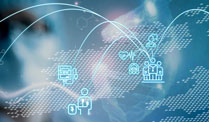Haematological Cancer
I’ve been told that I have haematological cancer. What is it exactly?
Haematological cancers are cancers arising from abnormal blood or bone marrow cells. Bone marrow is a spongy material that fills some of our bones and produces stem cells. Stem cells are cells at a very early stage of development. Each of the blood cells in the body develop from stem cells. In the bone marrow, the stem cells develop into three different types of blood cells:
- Red blood cells – carry oxygen to all cells in the body
- White blood cells – essential for fighting infection
- Platelets – help the blood to clot and control bleeding
Each of these bloods cells will remain inside the bone marrow until they are mature and able to function properly. They are then released into the bloodstream, where they move around the body in the blood.
What are the types of haematological cancer?
The types of cancer most likely to effect the bone marrow include:
- Leukaemia
- Lymphoma
- Myeloma
Leukaemia
Leukaemia is a cancer of the blood cells which are produced in the bone marrow. Acute leukemias come on suddenly, often within days or weeks, progressing quickly and need to be treated urgently. Chronic leukemias develop more slowly, often over many months or years. There are several different types of leukaemia:
- Acute lymphocytic leukemia (ALL): most common type of leukemia in young children but can also occur in adults.
- Acute myelogenous leukemia (AML): occurs in children and adults but is the most common type of acute leukemia in adults.
- Chronic lymphocytic leukemia (CLL): the most common chronic adult leukemia. You may feel well for years without needing treatment.
- Chronic myelogenous leukemia (CML): mainly affects adults. A person with CML may have few or no symptoms for months or years before entering a phase in which the leukemia cells grow more quickly.
- Other, rarer types of leukemia exist, including hairy cell leukemia, myelodysplastic syndromes and myeloproliferative disorders.
What are the symptoms of leukemia?
Leukemia symptoms vary, depending on the type of leukaemia a patient is experiencing. The common signs and symptoms include:
- Fever or chills
- Persistent fatigue, weakness
- Frequent or severe infections
- Losing weight without trying
- Swollen lymph nodes, enlarged liver or spleen
- Easy bleeding or bruising
- Recurrent nosebleeds
- Tiny red spots in your skin (petechiae)
- Excessive sweating, especially at night
- Bone pain or tenderness
Lymphoma
Lymphoma is a cancer of the lymphatic system. Lymphoma, like other cancers, is a disease of the body’s cells. Cells in different parts of the body work in different ways, but they all repair and reproduce themselves in the same way. Normally, cells divide in the body in an orderly and controlled manner. However, if for some reason the process gets out of control the cells carry on dividing. In lymphoma, a lump or tumour forms in one or more groups of lymph nodes.
There are 2 main types of lymphoma:
- Hodgkin's lymphoma (formerly known as Hodgkin’s disease)
- Non-Hodgkin's lymphoma (formerly known as non-Hodgkin’s disease)
1. Hodgkin's lymphoma
Hodgkin's lymphoma, is a cancer of the lymphatic system, which is part of your immune system. In Hodgkin's lymphoma, cells in the lymphatic system grow abnormally and may spread beyond the lymphatic system. As Hodgkin's lymphoma progresses, it compromises your body's ability to fight infection.
Symptoms
- Painless swelling of lymph nodes in your neck, armpits or groin
- Persistent fatigue
- Fever and chills
- Night sweats
- Unexplained weight loss — as much as 10% or more of your body weight
- Loss of appetite
- Itching
- Increased sensitivity to the effects of alcohol or pain in your lymph nodes after drinking alcohol
2. Non-Hodgkin's lymphoma
Non-Hodgkin's lymphoma can start anywhere in your body but the most common place is your neck, armpit or chest. The lymphoma cells can sometimes spread to other lymph glands. They can also enter your bloodstream and spread to other organs. It is also possible for non-Hodgkin lymphoma to start in an organ, such as your liver, stomach or bowel.
Most lymphomas are non-Hodgkin in type and there are more than 50 strains of the condition. The various types are categorised as high grade or low grade.
High grade - lymphomas grow quickly and need immediate treatment.
Low grade - cells grow very slowly and may need little or no treatment for months or years.
What are the symptoms?
- The first symptom is usually a lump or painless swelling of the lymph nodes in your neck, armpit or groin that does not go away.
- Other symptoms, known as B symptoms, may include the following:
- Heavy night sweats
- High temperatures or fevers
- Loss of appetite
- Unexplained weight loss
- Tiredness (fatigue)
- Itchy skin
Myeloma
Myeloma is also known as multiple myeloma or myelomatosis, a cancer of plasma cells.
Normally, new plasma cells are produced to replace old cells in a controlled method. However, in myeloma this process becomes out of control and large numbers of abnormal plasma cells (myeloma cells) are produced. These abnormal cells fill up the bone marrow and interfere with the production of normal white cells, red cells and platelets.
The myeloma cells commonly produce a large amount of a single type of abnormal antibody. This is known as a paraprotein or M protein. It can not fight infection effectively as it reduces the production of normal antibodies. When the myeloma cells spread throughout the bone marrow and into the bone it causes thinning of the bone, pain and sometimes fractures.
What are the symptoms of myeloma?
Myeloma may not cause any symptoms in the early stages of the disease. Occasionally, it is only following a routine blood test that any symptoms are identified. When symptoms do occur, they are mostly caused by a build-up of abnormal plasma cells in the bone marrow, and by the presence of the paraprotein in the blood. The most common symptom of myeloma is bone pain, most often located in the lower back or ribs. Other bones may be affected too, such as the skull or pelvis.
Other symptoms of myeloma may include:
- Tiredness and fatigue: due to a lack of red blood cells (anaemia).
- Kidney problems: caused by the paraproteins produced by the myeloma cells.
- Repeated infections: particularly chest infections, due to a shortage of normal antibodies.
- Loss of appetite, feeling sick, constipation, depression and drowsiness: caused by too much calcium in the blood (hypercalcaemia).
- Unexplained bruising and abnormal bleeding: nosebleeds or bleeding gums, due to a reduced number of platelets in the blood.
- Weight loss.
How is haematological cancer diagnosed?
Your GP may ask you to have a blood test. If following this, your GP spots abnormalities might indicate a more serious problem, they may recommend that you have a bone marrow exam. Bone marrow biopsy and bone marrow aspiration offer detailed information about the condition of your bone marrow and blood cells. A number of tests can be used to diagnose or confirm your condition and these include :
- MRI scan - of the whole body
- PET scan
- CT scan
- CT TAP
- X-rays
- Blood tests
- Bone marrow aspirate and biopsy – this involves taking a sample of bone marrow from the hip bone and enables us to look at how the bone marrow is working
- Lymph node biopsy - removes a sample of cells from an enlarged lymph node and looks at them closely under a microscope in the laboratory. Typically used in the diagnosis of Hodgkin and non-Hodgkin lymphoma
What treatments are available for haematological cancer?
- Radiotherapy
- Chemotherapy
- Steroids
- Stem cell transplantation
- Biological therapy
- Immunotherapy
- Stem cell transplantation
A stem cell transplant is a treatment to replace your diseased bone marrow with healthy stem cells that help you grow new bone marrow. A stem cell transplant may be an option if Hodgkin's lymphoma returns despite treatment. During a stem cell transplant, your own blood stem cells are removed, frozen and stored for later use. Next you receive high-dose chemotherapy and radiation therapy to destroy cancerous cells in your body. Finally your stem cells are thawed and injected into your body through your veins. The stem cells help build healthy bone marrow.









